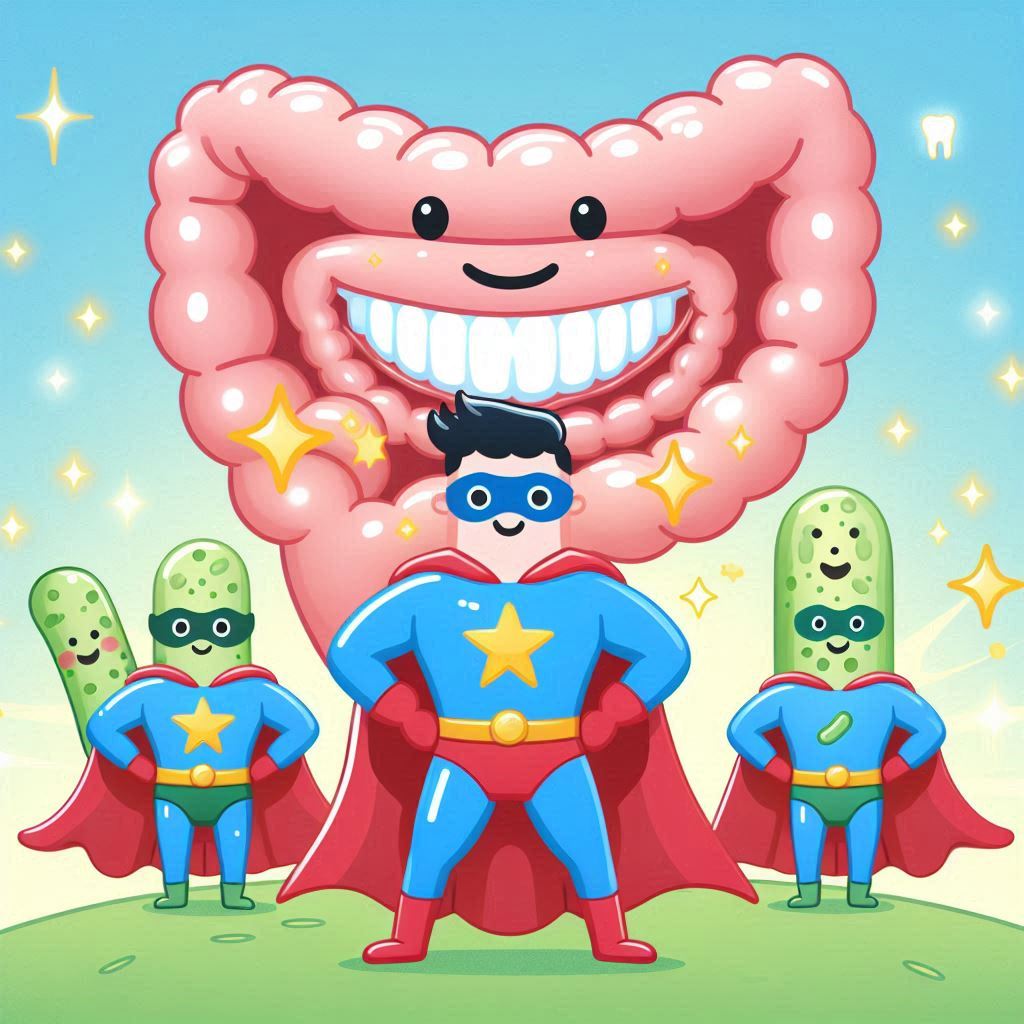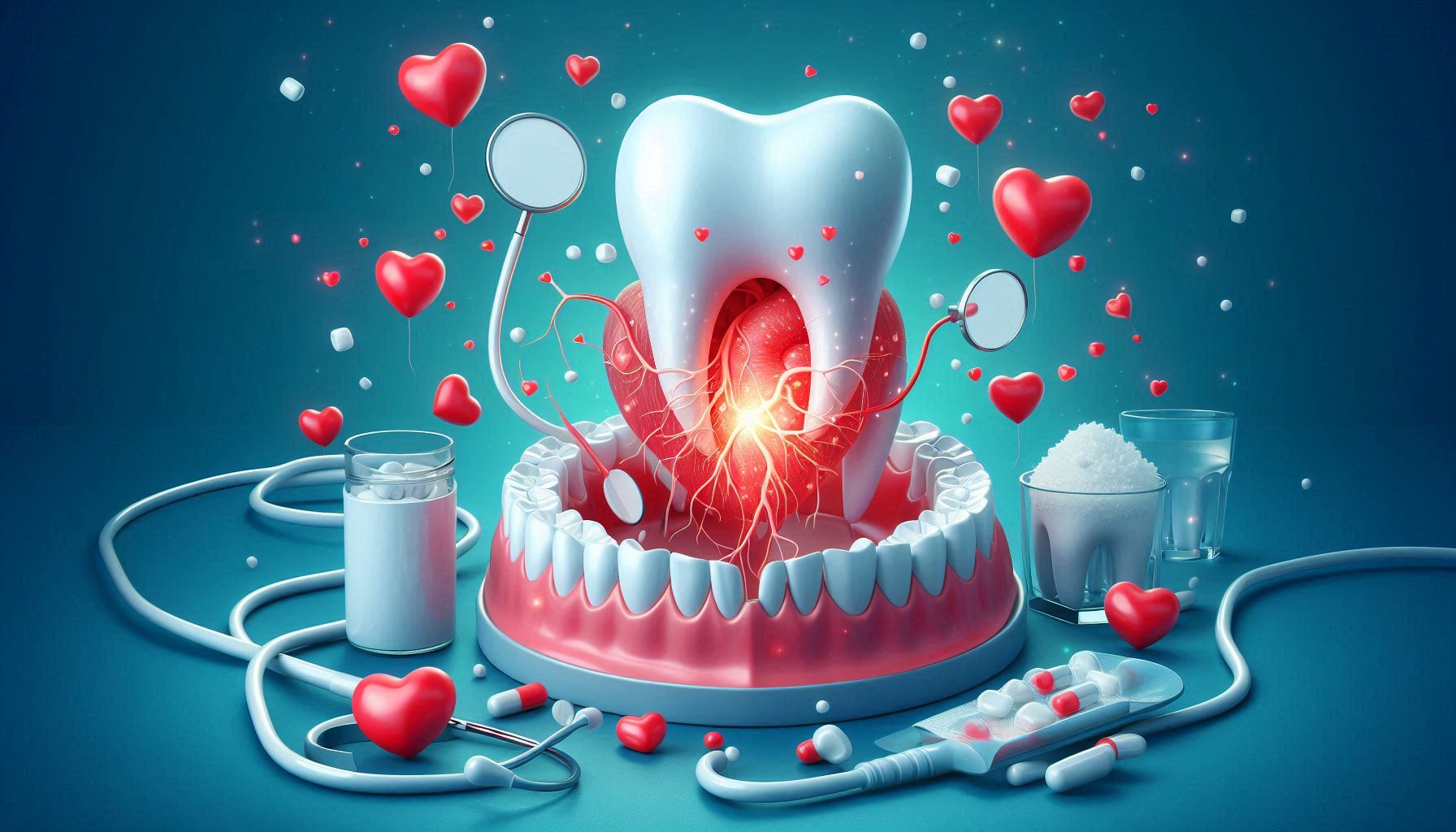Introduction to Bad Breath (Halitosis)
Bad breath, also known as halitosis, is a condition that many people experience at some point in their lives, often resulting in embarrassment, social anxiety, and reduced self-esteem. It can range from occasional unpleasant odors, usually due to certain foods or drinks, to persistent and chronic halitosis, which may indicate a more serious health issue.
According to research, approximately 25-30% of the global population is affected by chronic halitosis, making it a widespread concern. While halitosis is frequently linked to oral hygiene issues, it can also be a symptom of systemic health problems, such as gastrointestinal disorders, diabetes, or even respiratory infections.
Understanding the underlying causes of halitosis is the first step toward managing and eliminating bad breath. In this article, we will explore the causes, diagnosis, prevention, and various treatment options, from home remedies to medical interventions. By delving deep into the reasons for bad breath and providing practical solutions, we hope to help individuals regain their confidence and social ease.
What is Bad Breath?
Bad breath, or halitosis, refers to an unpleasant odor coming from the mouth. While everyone experiences bad breath occasionally, for example, after eating certain foods like garlic or onions, chronic bad breath can be a persistent problem that affects an individual’s quality of life.
Halitosis can be classified as either acute or chronic:
- Acute bad breath occurs sporadically and is usually related to food, drink, or temporary health issues like dehydration.
- Chronic bad breath, on the other hand, persists for a prolonged period (typically longer than three months) and may be caused by an underlying medical condition.
Bad breath is often caused by bacteria in the mouth that break down food particles and produce sulfur compounds. These compounds, such as hydrogen sulfide and methyl mercaptan, are responsible for the foul odor. Sometimes, bad breath can signal more serious health concerns, which makes it essential to understand and address the root cause.
Causes of Bad Breath
Oral Causes
The most common cause of bad breath is poor oral hygiene. Here are some specific oral issues that contribute to halitosis:
- Poor Oral Hygiene
Failing to brush and floss regularly allows food particles to remain in the mouth, leading to bacterial growth. These bacteria break down food debris, producing sulfur compounds that lead to foul-smelling breath. - Gum Disease
Gingivitis (early-stage gum disease) and periodontitis (advanced gum disease) can cause bad breath due to bacterial growth in infected gums and the formation of pockets where food and bacteria accumulate. Infected gums may also bleed, releasing a foul odor. - Dry Mouth (Xerostomia)
Saliva plays a vital role in washing away food particles and bacteria. When the mouth becomes dry due to reduced saliva production (xerostomia), it can lead to bad breath. Dry mouth can be caused by dehydration, certain medications, or breathing through the mouth. - Tongue Coating and Bacteria
The surface of the tongue, especially the back of the tongue, harbors bacteria, dead cells, and food particles. This coating can produce an unpleasant odor if not cleaned regularly. - Tooth Decay and Infections
Cavities, broken teeth, or infected root canals are breeding grounds for bacteria. If left untreated, these issues can lead to an increase in bad breath, particularly if bacteria in the cavities are allowed to proliferate. - Unclean Dental Appliances
Braces, dentures, or other dental appliances can trap food particles and bacteria, contributing to bad breath if not properly cleaned.
Systemic Causes
Bad breath can also be linked to underlying health conditions, including gastrointestinal issues, respiratory infections, and more.
- Gastroesophageal Reflux Disease (GERD)
GERD, or acid reflux, occurs when stomach acid flows back into the esophagus. This can lead to a sour, bitter smell on the breath due to the stomach acid and digestive enzymes. GERD is also associated with heartburn, chest pain, and difficulty swallowing. - Sinus Infections and Postnasal Drip
Sinus infections, colds, and allergies can cause postnasal drip, which is the constant drainage of mucus from the sinuses to the throat. This mucus often contains bacteria that contribute to bad breath when swallowed. - Respiratory Infections
Conditions like bronchitis, pneumonia, or even a cold can lead to bad breath due to bacterial overgrowth in the respiratory tract. In such cases, the body tries to clear the infection, but the associated bacteria can result in foul-smelling breath. - Liver Disease
When the liver is damaged or diseased, it may fail to properly filter toxins from the bloodstream. These toxins can be exhaled through the lungs, leading to an unusual, musty or sweet-smelling odor, often described as “fetor hepaticus.” - Diabetes
Uncontrolled diabetes, particularly in the case of diabetic ketoacidosis, can cause fruity-smelling breath. This occurs when the body starts breaking down fats for energy instead of glucose, producing ketones that are released in the breath. - Kidney Disease
Kidney failure or severe kidney disease can cause a distinct ammonia-like odor in the breath, also referred to as “uremic halitosis.” This happens when the kidneys are no longer able to filter waste from the body efficiently, causing waste products to accumulate in the bloodstream and be exhaled through the breath.
Diet and Lifestyle Factors
Diet and lifestyle choices can significantly impact the freshness of your breath. Certain foods and habits can promote bacterial growth in the mouth, while others can help prevent it.
- Foods and Beverages
Certain foods, such as garlic, onions, and spicy foods, contain sulfur compounds that can contribute to bad breath. Coffee and alcohol, both of which can dry out the mouth, are also common culprits. Additionally, sugary foods and drinks feed bacteria in the mouth, leading to foul odors. - Smoking and Tobacco Use
Smoking and using tobacco products not only leave an unpleasant odor in the mouth but also dry out the mouth, contributing to halitosis. Tobacco use can also lead to gum disease, which further exacerbates bad breath. - Dehydration
Not drinking enough water can reduce saliva production, leading to dry mouth and bad breath. Saliva is essential for washing away food particles and neutralizing acids produced by bacteria. - Stress and Hormonal Changes
Stress can contribute to dry mouth due to the activation of the “fight or flight” response, which reduces saliva flow. Hormonal changes during pregnancy or menopause can also affect saliva production and lead to bad breath.
Diagnosing Bad Breath
To diagnose bad breath, healthcare professionals rely on several methods:
- Clinical Examination: A dentist or doctor will visually inspect the mouth, gums, and tongue for signs of infection or inflammation.
- Medical History: Your healthcare provider will ask about your diet, oral hygiene routine, lifestyle habits, and any existing health conditions to determine potential causes.
- Halimeter: This is a device that measures the levels of sulfur compounds in the breath, which can help determine the severity of bad breath.
- Organoleptic Measurement: This method involves a trained professional smelling your breath directly to assess the level of odor.
- Self-diagnosis: If you are concerned about bad breath, you can test your own breath by licking the back of your wrist, waiting for it to dry, and then smelling it.
If bad breath persists despite improving oral hygiene and lifestyle changes, it is important to seek medical attention to rule out any underlying health conditions.
Preventing and Combating Bad Breath
Oral Hygiene Practices
Maintaining proper oral hygiene is the most effective way to prevent and combat bad breath.
- Brushing Teeth Properly: Brushing your teeth at least twice a day with fluoride toothpaste helps remove plaque and food particles. Pay special attention to the back of the tongue, where bacteria can accumulate.
- Flossing: Flossing removes food particles and bacteria from between the teeth and along the gum line. It is recommended to floss at least once daily.
- Using Mouthwash: Mouthwash with antibacterial properties can help kill bacteria and provide a temporary fresh feeling.
- Cleaning the Tongue: Using a tongue scraper or toothbrush to clean the tongue regularly can help remove bacteria and prevent bad breath.
- Visiting the Dentist: Regular dental cleanings and checkups can prevent plaque buildup and detect oral issues, such as cavities or gum disease, that contribute to bad breath.
Managing Dry Mouth
If dry mouth is contributing to your bad breath, here are some strategies to combat it:
- Hydrate: Drinking plenty of water throughout the day helps maintain moisture in the mouth and promotes saliva production.
- Use Saliva Substitutes: Over-the-counter saliva substitutes, available in the form of sprays or gels, can help alleviate dry mouth.
- Chewing Gum: Sugar-free gum, especially those containing xylitol, stimulates saliva production and helps keep the mouth moist.
- Breath Sprays: While not a long-term solution, breath sprays can temporarily mask bad breath, especially if you’re in a social situation.
Diet and Nutrition
What you eat can have a significant impact on your breath.
- Eat Fresh Produce: Vegetables like carrots, celery, and apples help scrub the teeth, stimulate saliva production, and neutralize odors.
- Avoid Sugary Foods: Sugar is a major food source for oral bacteria. Reducing your intake of sugary foods and beverages can help combat bad breath.
- Stay Hydrated: Drinking plenty of water helps prevent dry mouth and flushes food particles and bacteria from the mouth.
- Probiotics: Foods rich in probiotics, such as yogurt, can help improve the balance of bacteria in the gut and mouth, leading to fresher breath.
Lifestyle Modifications
Certain lifestyle changes can also help reduce bad breath.
- Quit Smoking: Quitting smoking and avoiding tobacco products will not only help improve your breath but also your overall oral and respiratory health.
- Reduce Stress: Stress-reduction techniques such as yoga, meditation, and deep breathing can help reduce dry mouth and associated bad breath.
- Get Enough Sleep: Adequate sleep promotes saliva production, which helps prevent bad breath caused by dry mouth.
Medical Treatments and Solutions
If bad breath persists despite improved oral hygiene and lifestyle changes, medical treatments may be necessary.
Treatments for Oral Causes
- Professional Dental Cleanings: Regular visits to the dentist for professional cleanings help remove plaque and tartar buildup, which can contribute to bad breath.
- Antimicrobial Mouthwashes: These mouthwashes can help reduce the number of bacteria in the mouth, alleviating bad breath.
- Treating Gum Disease: If gum disease is the underlying cause of bad breath, a dentist may recommend treatments such as scaling and root planing to clean deep pockets of bacteria in the gums.
- Cavity Treatment: If cavities or tooth infections are contributing to bad breath, restorative dental work (fillings, root canals, etc.) may be necessary.
Treating Underlying Medical Conditions
If halitosis is caused by a systemic condition, it’s essential to address the root cause.
- GERD Medications: Medications such as proton pump inhibitors (PPIs) or antacids can help control acid reflux and reduce bad breath caused by stomach acid.
- Antibiotics for Infections: If a respiratory or sinus infection is causing bad breath, antibiotics may be prescribed to treat the infection and eliminate the bacteria causing the odor.
- Managing Diabetes: Proper blood sugar control and medication can help address bad breath related to diabetic ketoacidosis.
- Treating Kidney or Liver Disease: Treating the underlying organ dysfunction may help eliminate the associated bad breath.
Home Remedies and Natural Solutions for Bad Breath
Natural Mouthwash Alternatives
- Baking Soda: A solution of baking soda and water can help neutralize odors.
- Apple Cider Vinegar: A small amount diluted in water can act as a natural mouthwash.
Essential Oils
- Peppermint, Eucalyptus, and Tea Tree Oils: These oils are known for their antibacterial properties and can help freshen breath when added to water.
Natural Herbs
- Fennel Seeds: Chewing fennel seeds can help freshen the breath after meals.
- Aloe Vera: Aloe vera juice can support digestive health and combat bad breath caused by gastrointestinal issues.
The Role of Hydration and Saliva
Staying properly hydrated plays an essential role in maintaining fresh breath. Drinking sufficient water helps flush food particles, bacteria, and other debris from the mouth, reducing the likelihood of bad breath. Additionally, adequate hydration supports the production of saliva, a critical component in oral health. Saliva serves multiple functions that contribute to oral freshness and hygiene. It neutralizes acids produced by bacteria in the mouth, which can lead to foul odors. Saliva also contains enzymes that help break down food particles, preventing them from lingering and contributing to bad breath. Beyond its cleaning properties, saliva plays a vital role in protecting the oral tissues from infections. The antibacterial components in saliva act as a natural defense, reducing the growth of harmful microorganisms that can cause unpleasant odors. Insufficient saliva production, often a result of dehydration, can lead to dry mouth (xerostomia), which exacerbates bad breath. Therefore, drinking enough water throughout the day not only maintains hydration levels but also promotes a healthy oral environment. People should aim for at least 8 glasses of water daily, especially if they experience persistent dry mouth, to ensure proper saliva production and maintain optimal breath freshness.
The Psychological and Social Aspects of Halitosis
Chronic halitosis can have a profound psychological and social impact on individuals. People suffering from persistent bad breath often experience embarrassment and a lack of self-confidence, which can significantly affect their emotional well-being. They may become overly self-conscious about their breath, leading to social withdrawal and avoidance of interactions that require close communication, such as conversations or public speaking. This avoidance behavior can be particularly distressing, as the fear of being judged or rejected due to their condition may create feelings of isolation. Additionally, the social stigma associated with halitosis can amplify these negative emotions, making individuals more reluctant to seek help or discuss their problem with others. The stress and anxiety surrounding bad breath can even impact daily functioning, leading to a reduction in overall quality of life. Over time, these emotional challenges may become more overwhelming, further perpetuating a cycle of avoidance and social exclusion. It is important for individuals with chronic bad breath to seek support from healthcare professionals, as addressing both the physical and emotional aspects of halitosis can improve their quality of life and social interactions.
Conclusion
Bad breath, though common, can be a source of discomfort and anxiety for many individuals. It is important to understand the various causes of halitosis, from poor oral hygiene to systemic health issues. By adopting proper oral care practices, making lifestyle changes, and seeking medical treatment when necessary, most people can manage and eliminate bad breath. Maintaining good oral hygiene and staying hydrated are fundamental steps in combating bad breath, but if the problem persists, it is essential to consult with a healthcare professional to rule out underlying health conditions.
By taking proactive steps and staying informed about your oral and overall health, you can confidently tackle bad breath and improve your social interactions and quality of life.
SOURCES
Loesche, W. J. (2001). Periodontal disease as a risk factor for heart disease. Journal of Clinical Periodontology, 28(8), 1076–1087.
Noble, C. W. (2015). Oral health and its relationship to systemic diseases. American Journal of Dentistry, 28(4), 225–231.
Saini, R. (2012). Bad breath: A review on the etiology, diagnosis, and treatment. International Journal of Dental Hygiene, 10(1), 1–8.
Meyers, S. A., & Yancey, A. K. (2006). Halitosis: A practical review. Journal of the American Dental Association, 137(11), 1525–1530.
Prajapati, R., & Jaiswal, R. (2018). Relationship between dry mouth and halitosis. Journal of Clinical and Diagnostic Research, 12(5), 1–6.
Kwak, H., & Choi, B. Y. (2013). Oral bacteria in the context of bad breath: Review and management strategies. Journal of Oral Microbiology, 5(1), 1–8.
Moynihan, P. J. (2005). Diet and dental health: A review of the literature. European Journal of Clinical Nutrition, 59(10), 1029–1037.
Zhang, L., & Wang, X. (2010). Oral malodor: Etiology, diagnosis, and treatment strategies. Journal of the American Dental Association, 141(5), 502–507.
Akkus, Z., & Aytac, K. (2016). Impact of smoking on oral health and halitosis. Journal of Clinical Dentistry, 27(4), 148–153.
Zhu, C., & Ling, H. (2014). The role of probiotics in the treatment of bad breath: A systematic review. International Journal of Food Sciences, 42(2), 62–68.
HISTORY
Current Version
February 7, 2025
Written By:
SUMMIYAH MAHMOOD




